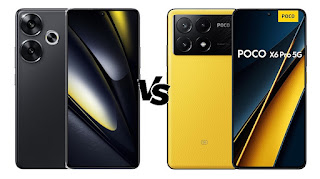Poco M6 Plus Launched in India: Features, Specs and Price

POCO has expanded its M series with the launch of the M6 Plus 5G in India. This budget-friendly smartphone aims to offer a balance of performance, features, and affordability. Big Display, Decent Performance The POCO M6 Plus 5G sports a large 6.79-inch IPS LCD display with a 120Hz refresh rate, ensuring smooth scrolling and a responsive user experience. Under the hood, the device is powered by the Snapdragon 4 Gen 2 AE processor, which can handle everyday tasks and light gaming with ease. Camera and Design The smartphone features a dual rear camera setup with a 108MP main sensor, capable of capturing detailed photos. A 2MP macro camera is included for close-up shots. For selfies, there's a 13MP front camera. The POCO M6 Plus boasts a sleek design with a side-mounted fingerprint sensor for added security. Battery and Charging A substantial 5030mAh battery powers the device, promising long-lasting performance on a single charge. To quickly top up the battery, the phone supports 33...










